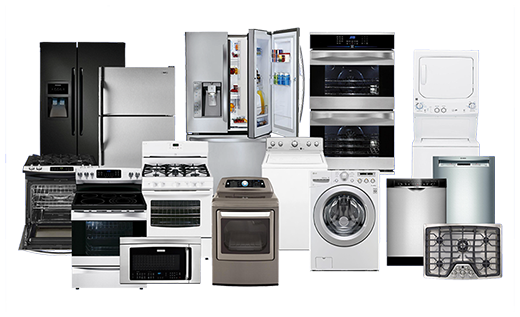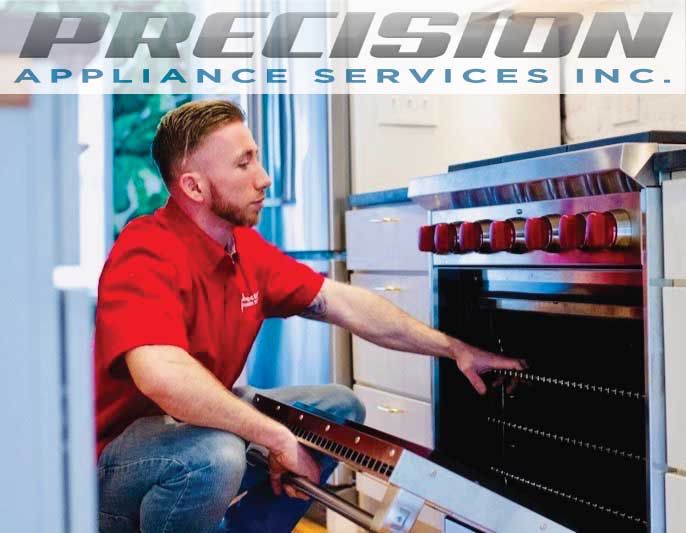The Ultimate Overview to Understanding Device Repair at Home
When your fridge stops cooling or your stove declines to warmth, it can feel overwhelming. Recognizing device fixing at home can conserve you money and time. You'll find out to acknowledge symptoms, utilize necessary tools, and comply with an organized troubleshooting process. However before you start, there are critical safety and security precautions you need to consider. What are the most typical issues, and how can you repair them? Let's explore the fundamentals.
Usual Appliance Troubles and Their Symptoms
When your home appliances start acting up, it's necessary to identify the indicators at an early stage. Neglecting them can bring about bigger problems and costly fixings. If your fridge isn't cooling down properly, you might see cozy spots or condensation forming. This might suggest a falling short compressor or an obstructed vent.Your dishwasher might reveal issues with dirty recipes or unusual noises during cycles. If you hear grinding or clanking, it's time to investigate.A washing machine that won't spin or drain can leave you with soaked washing, recommending a clogged up drainpipe or a malfunctioning pump.Lastly, if your oven's temperature seems off or it takes for life to pre-heat, you may be taking care of a malfunctioning thermostat. By staying alert to these signs and symptoms, you can resolve problems prior to they escalate right into significant fixings.
Vital Devices for Device Fixing
When you're taking on home appliance fixings in your home, having the right devices is essential. Fundamental hand tools like screwdrivers and pliers will assist you disassemble and fix numerous devices, while electric testing devices guarantee you're working safely with wiring. Allow's go over what you need to start on your fixing trip.
Basic Hand Devices
Having the right tools is important for efficient device repair work in the house. Start with a trustworthy screwdriver set, consisting of both flathead and Phillips types, as screws are usual in home appliance setting up. Pliers are likewise important; they assist with gripping, twisting, and cutting cables or small components. A pair of needle-nose pliers can get to difficult situations quickly. You'll require a good flexible wrench for tightening or loosening nuts and bolts. An energy blade is handy for cutting via packaging or insulation. Do not forget a tough workbench or surface to safely organize your tools and parts. With these standard hand tools, you'll be well-prepared to take on most appliance repairs that come your means.
Electric Screening Instruments
Along with standard hand devices, electric testing tools play a vital role in home appliance repair work. These devices assist you identify electrical problems and warranty devices work safely. A multimeter is essential; it gauges voltage, present, and resistance, enabling you to pinpoint problems promptly. A non-contact voltage tester is one more essential, allowing you identify real-time wires without making direct call, boosting your security. Clamp meters are fantastic for gauging present flow in cables without disconnecting them, conserving you time and effort. Additionally, circuit testers can quickly inspect if electrical outlets are working properly. By making use of these devices, you'll enhance your troubleshooting process and enhance your repair abilities, making device upkeep a great deal less complicated.
Step-by-Step Overview to Diagnosing Device Issues
When your appliance breaks down, it can be discouraging, however detecting the problem doesn't have to be overwhelming. You'll discover to identify common issues and apply reliable repairing techniques. Allow's go through the actions to get your device back in working order.
Typical Appliance Issues

Troubleshooting Methods Clarified

Fixing Significant Kitchen Area Devices: A Closer Look
Have you ever before asked yourself exactly how to deal with usual issues with your kitchen area home appliances? Fixing significant kitchen area appliances like fridges, ovens, and dish washers can be much easier than you think. Begin by identifying the issue-- whether it's a refrigerator not cooling down or a stove that won't heat up. Often, a straightforward reset or inspecting the power resource can fix the issue.For fridges, clean the condenser coils and inspect the door seals. If your oven's not home heating, examine the burner and thermostat. Dish washers may simply need a tidy filter or a reset to get them back at work. Always disconnect the appliance prior to diving right into fixings to guarantee your safety.Don' t neglect to speak with the customer guidebook for specific fixing ideas associated with your version. With a bit of persistence and the right tools, you can confidently take on home appliance fixings and save money at the same time!

Troubleshooting Washing Devices: Tips and Techniques
When your laundry home appliances start breaking down, it can feel frustrating, however fixing them does not have to be a hassle. Begin by checking the power supply. Validate the appliance is connected in and the electrical outlet is operating. Next, examine the door or cover switch; a faulty button can prevent the machine from operating.For washers, if it's not rotating, check for unbalanced loads. Redistributing the garments may address the concern. If your YOURURL.com clothes dryer isn't heating, clean the dust filter and inspect the vent for blockages.Listen for unusual noises; they can suggest a problem. If your appliance is leaking, inspect the hose pipes for splits or loosened links. Record any mistake codes presented on electronic screens, as they can assist you in identifying the issue. Finally, seek advice from the customer handbook for details repairing pointers associated with your version.
Safety Precautions to Take Throughout Repairs
Prior to you begin any kind of device repair work, it's necessary to prioritize security to avoid accidents or injuries. Initially, unplug the appliance or shut off the breaker to assure no power reaches it while you function. Usage shielded devices to decrease the risk of electric shock. Use security goggles and gloves to secure on your own from sharp sides or debris (Dependable Refrigeration & Appliance Repair Service Dryer repair near me).Make particular your workspace is tidy and well-lit, so you can see what you're doing. Keep youngsters and family pets far from the area to avoid distractions and prospective threats. If you're taking care of gas home appliances, be added careful; check for leakages prior to proceeding.Take your time, and don't rush via fixings. If you really feel unclear concerning any kind of action, it's far better to stop briefly and research study than to think. Complying with these precautions will certainly help create a more secure environment for your DIY home appliance fixing task
When to Call a Specialist for Help
How do you recognize if it's time to contact an expert for device fixings? If you have actually tried basic troubleshooting without success, it's a clear indication. For instance, if your home appliance still won't start or reveals uncommon sounds after resetting it, do not hesitate to look for specialist help.When you observe leaks, smoke, or melting smells, prioritize security and call a professional right away. These problems can result in more substantial damages or pose risks to your home.Also, if your home appliance is under guarantee, contacting a professional is frequently the most effective path. They can assure that repair services will not void your warranty, saving you cash in the lengthy run.Finally, if you're unsure or awkward with complicated repair services, it's sensible to leave it to the professionals. Remember, tackling challenging concerns without the right know-how can bring about pricey mistakes. Trust a professional when doubtful!
Frequently Asked Questions
Exactly How Can I Protect Against Appliance Problems in the Future?
To prevent home appliance troubles in the future, you must do routine upkeep, check for damage, tidy filters, and prevent overloading. Staying proactive will help expand their life-span and maintain them running efficiently.
What Are the Most Usual Do It Yourself Device Repair Mistakes?
You could overlook safety preventative measures, avoid fixing steps, or use wrong devices when attempting do it yourself home appliance fixings. Hurrying the process or overlooking producer standards can bring about more significant problems and costly blunders. Stay individual and notified!
Exactly how Do I Know if a Component Demands Substitute?
You can tell if a component requires replacement by examining for unusual sounds, leaks, or inconsistent efficiency. If the device has a hard time to run appropriately or reveals visible damages, it's likely time for a replacement.
Can I Make Use Of Generic Parts for Appliance Repair Works?
Yes, you can use generic components for device repair work, however ascertain they're compatible - Kenmore Dryer Repair Oro Valley Dependable Refrigeration & Appliance Repair Service. Common components may save you cash, however they might affect efficiency or long life, so consider your alternatives very carefully prior to making a decision
What Warranties Cover Device Services?
Most home appliance service warranties cover repair work for manufacturing issues, however they usually omit damage from misuse. Inspect your warranty terms thoroughly, as some might call for making use of licensed service technicians and original components for protection to stay valid.